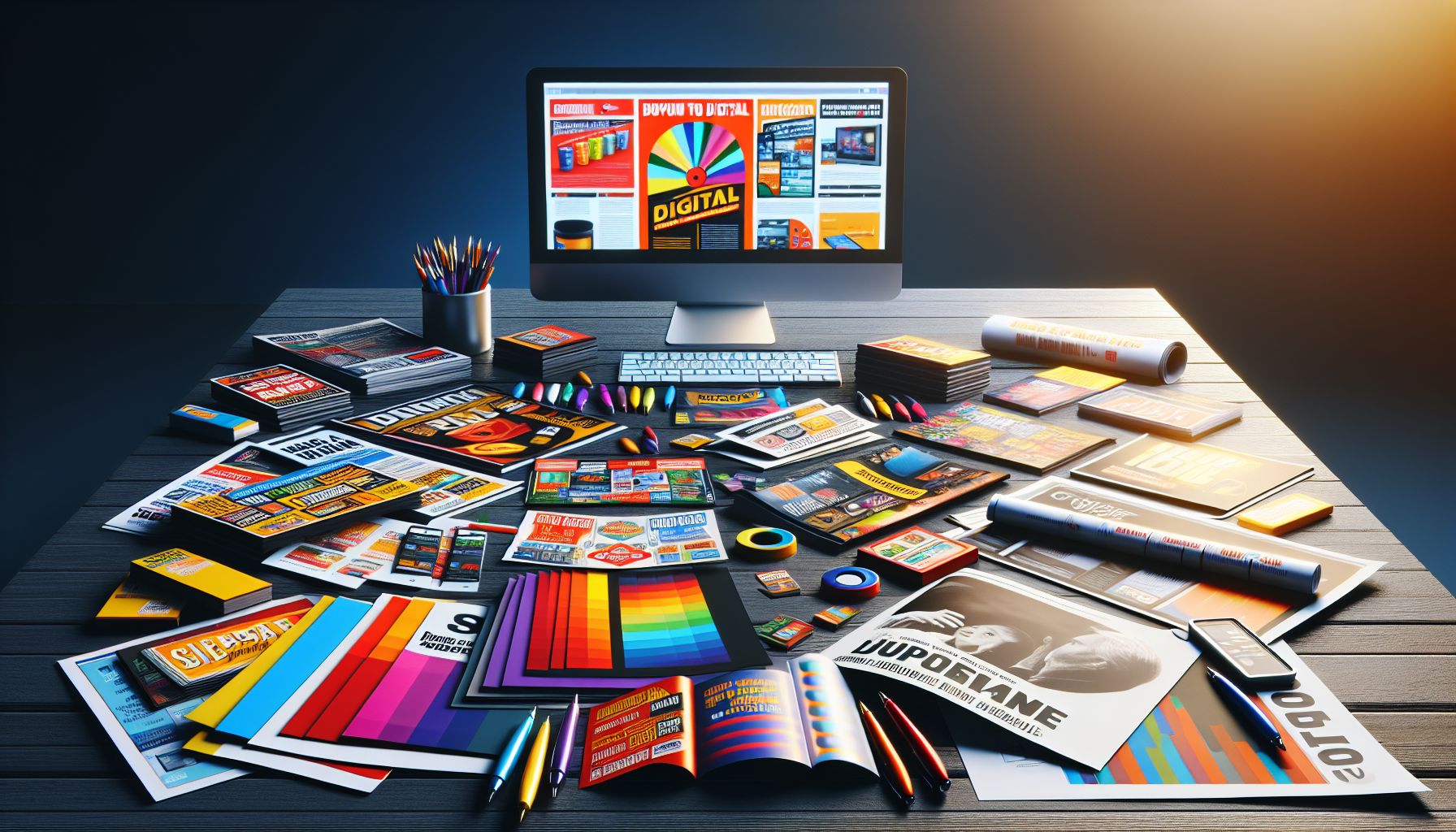In today’s fast-paced digital age, it’s easy to believe that the only effective way to promote your business is through online channels. However, printed marketing materials still hold immense value and should not be underestimated. In this article, we will explore the enduring power of printed marketing and why it remains a crucial component of any successful marketing strategy.
Introduction: A World of Digital Overload
As technology continues to advance, our lives become increasingly digitalized. A recent study conducted by MarketingSherpa found that the average person receives over 120 business emails each day. With inboxes overflowing and online advertisements bombarding users at every turn, it’s no wonder that many individuals feel overwhelmed by the constant digital noise.
The Tangible Advantage: Why Print Matters
Amidst the digital chaos, printed marketing materials offer something intangible channels just can’t replicate: tangibility. Holding something physical creates a stronger emotional connection than scrolling through a screen. The tactile nature of print allows individuals to engage with the material in a way that digital simply cannot match. This emotional bond is what makes printed marketing materials so effective.
1. Credibility and Trust
Printed marketing materials carry an inherent sense of credibility and trust. In a world where anyone can create a website or social media account, having a physical presence helps establish your brand’s authenticity. People are inherently skeptical online, constantly questioning the trustworthiness of various digital sources. A well-designed, thoughtfully crafted print piece can convey a sense of professionalism and reliability that digital marketing often struggles to achieve.
2. Personalization and Targeting
Printed marketing offers an opportunity for personalized and targeted communication. By tailoring print materials to specific audiences, you can create a more personal connection with potential customers. Whether it’s a direct mail piece sent to a specific demographic or a magazine ad placed in a publication relevant to your target market, printed marketing allows for a more focused approach. Personalization and targeting enhance the overall effectiveness of your marketing efforts and can result in higher conversion rates.
3. Increased Engagement
Printed marketing materials afford a unique opportunity for increased engagement. Whether it’s flipping through a brochure, holding a catalog, or leafing through a magazine, the physical act of interacting with print engages multiple senses. This multi-sensory experience immerses the individual in your brand message and increases the likelihood of them remembering your product or service. Print materials also tend to have longer lifespans than digital ads that vanish with a single click, further extending their potential reach and impact.
4. Less Distraction, More Focus
Unlike online marketing, printed materials allow for focused engagement without the distractions inherent to digital mediums. Online advertisements are often riddled with clickable links and sidebars filled with more attention-grabbing content. This constant barrage of distractions can make it difficult to capture and hold the attention of your target audience. With print, you eliminate these distractions and create an uninterrupted experience for potential customers, maximizing the impact of your message.
The Synergy of Print and Digital: The Power of Integration
While printed marketing materials are undeniably powerful on their own, they reach new heights when combined with digital marketing strategies. By integrating print and digital tactics, you can create a seamless and cohesive brand experience that resonates with your audience. Here are a few ways to merge the power of print and digital:
1. QR Codes and Augmented Reality
One of the most effective ways to combine print and digital is through the use of QR codes and augmented reality (AR). By adding QR codes to your print materials, you provide a direct link to your online presence, encouraging further engagement and conversion. Additionally, AR technology can bring print materials to life, creating an interactive and memorable experience for the viewer.
2. Landing Pages and Personalized URLs (PURLs)
When using print materials, it’s essential to guide potential customers to a specific digital destination where you can track their engagement. By including unique landing page URLs or PURLs on your print materials, you can drive traffic to tailored online experiences. This integration allows you to measure the effectiveness of your print campaigns, gather valuable customer data, and continue the conversation in the digital realm.
3. Social Media and Hashtags
Leveraging the power of social media is crucial in today’s marketing landscape. By incorporating social media icons and hashtags on your print materials, you can encourage individuals to engage with your brand online. This integration not only expands the reach of your printed message but also fosters community building and user-generated content, further enhancing your brand’s visibility.
Conclusion: A Timeless Marketing Medium
Printed marketing materials continue to hold their ground as a valuable component of any comprehensive marketing strategy. The tactile advantage, credibility, personalization, increased engagement, and focused attention make print a powerful tool in a world saturated with digital noise. By integrating print and digital strategies, you can create a seamless brand experience that fuels engagement, drives conversions, and sets your business apart from the competition. Don’t overlook the enduring power of printed marketing – it’s a timeless medium worth investing in.
